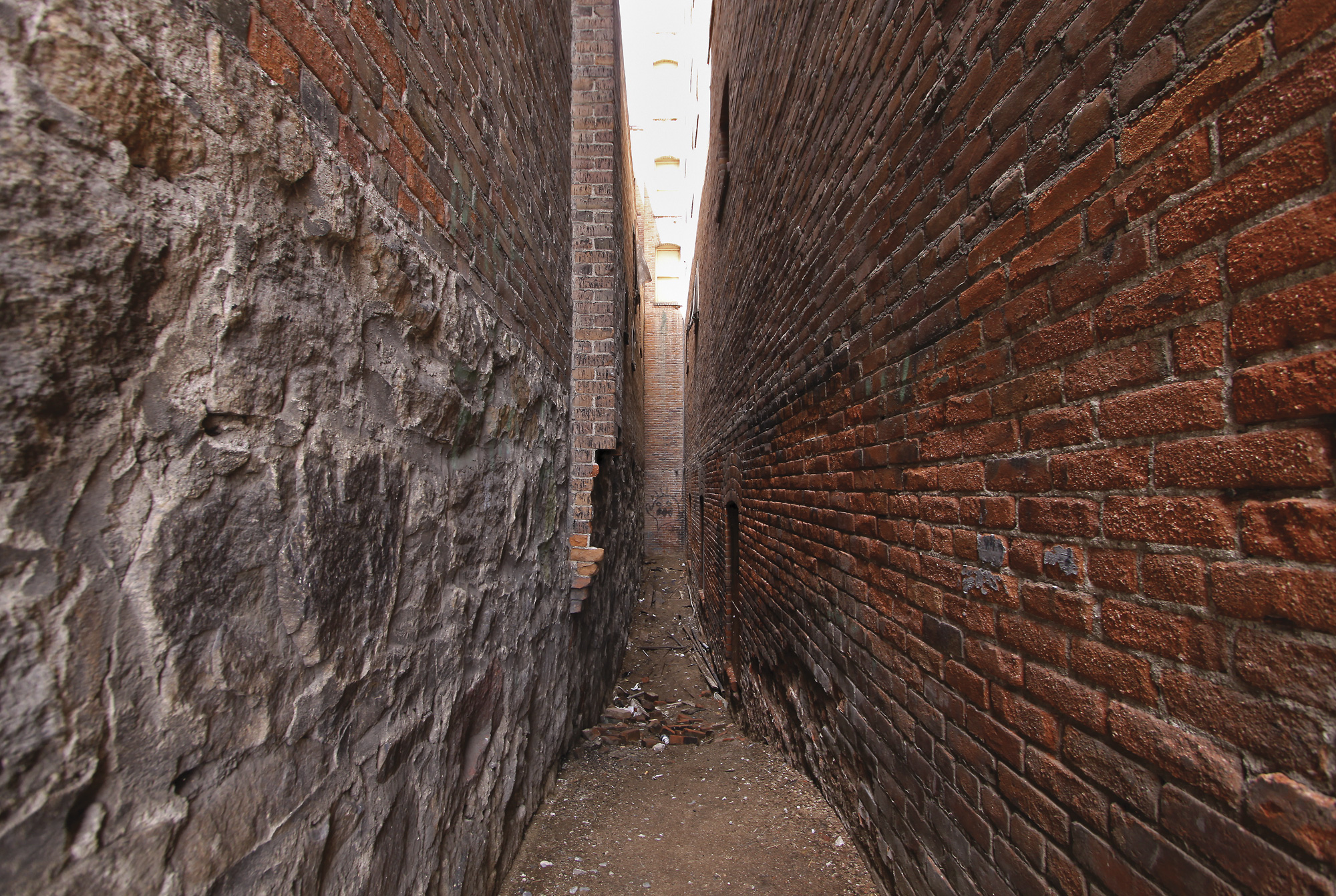
23 Jul Ghost Alleys of Butte
IF YOU ARE AN AFICIONADO OF ALLEYS, AS IS JIM JARVIS, BUTTE-SILVER BOW’S historic preservation officer, you might stare from your fourth-floor apartment in the 1922 Finlen Hotel and marvel at a striated snapshot of Butte’s fabled uptown. And if a generous host, you might descend to Wyoming Street and go hands-on. “The best things in alleys are the ghost signs,” Jarvis says of those hand-painted advertisements for products or businesses that have faded from sunlight or weather, but which endure in the passageways’ dimness. “This one, for Wrigley’s Spearmint Gum, has survived because it’s always been in the shadow of that north face of the building.” The sign is exceptional, covering the south wall of a tall brick structure with faded green, red, yellow and white pigment — the gum pack rendered in trompe l’oeil. “Imagine painting that right on the side of a building,” Jarvis says. “Which is not the most uniform surface to begin with. Imagine some poor guy on a scaffold, clinging there for days. Like Michelangelo in the Sistine Chapel.”
Jarvis owns the scholarly creds to compare Butte’s alleys to the Vatican sanctuary, but he also has enough street sense to admire the skill of a semi-truck driver backing his huge rig into the Spearmint alley. “At 5 a.m. every Wednesday, a semi will back all the way in here to unload at this little furniture store. The first time that happened, I couldn’t figure what the hell the guy was doing. He was quick about it, and it was pretty amazing.”
Though seemingly vacant, “The alleys are well-utilized,” Jarvis explains. “With the coming and going of materials to these large buildings, they serve a valuable function. And the locals use them quite a bit as shortcuts. Even though they can be scary-looking. During the day, they’re a lot of fun. In the evening, the alleys associated with bars tend to take on a more seedy quality.”
It’s then that Jarvis and his wife can watch from their perch in the Finlen, as the sun sets over Uptown, stars flicker in the eastern sky, and a thousand lights ignite the city. “This alley is the best view you get from our apartment,” he says. “You can see the historic side of Butte’s buildings here, which on the streets are often covered with stucco or another facade. The industrial architecture in alleys is lovely, as are the fire escapes, original cobblestones and granite foundations of the town.” He turns. “In addition, this alley lines up perfectly with the facade of the M&M Saloon, and that big old neon sign. There are lights and shadows throughout the day, but at night you get this reddish glow at the end.”
Alleys are the backs of things, containing much of what citizens wish hidden, but which often reveal more of a city’s character than do its facades. In Montana, fine alleys survive in Missoula, Miles City, Billings, Bozeman and Livingston, but as Peter Brown, of the state’s Historic Preservation Office, tells me, “Of all Montana’s alleys, Butte’s have the least amount of updating.” That’s true of the alley between Gamers Café and the M&M, and it’s celebrated for it. There, a scene from Wim Wenders’ 2005 film, Don’t Come Knocking, starring Sam Shepard and Jessica Lange, was shot. Lange plays the M&M’s manager, and Gabriel Mann her son. They argue vehemently, and their verbal jousting is significant, for innumerable such disputes have been settled by Butte’s alley doors. As have romantic comminglings. Historian Ellen Crain, Director of the Butte-Silver Bow Public Archives, says, “People do all sorts of things in alleys: pee, drink, smoke pot, make love.”
But mostly they idle, alleys having become urban commons … quiet spots where a city dweller may escape the bustle, walk, smoke, or watch the sunlight change on the scored brick. In an alley off Granite Street, an artist sketches in watercolor the pastels of a 19th century building, as a young mother pushes her stroller toward Montana Street and a cook idles on wooden steps, meditating. Traffic is audible from Broadway, but here, with flowering weeds growing through cobblestones and bricks cooling in the shade, they might be in an English country mews.
Despite alleys’ utility as commons, pedestrian thoroughfares and delivery ways, their integrity in Butte is marginally threatened. “People are always trying to block off, widen, or get them closed,” Crain says. “But they rarely are successful.” Police remain edgy and hyper-vigilant about their after-hours use. Yet alleys endure.
This morning, a brown-bearded man in an M&M T-shirt had stood behind the saloon on break. He was Rick Dolittle, chef and waiter at its café. I asked what habitually occurred here, and he said, “Just about everything. Bumping uglies, smoking pot.” He had grown up in Butte, and as a kid had swung off the transverse walk across the M&M Alley, near Broadway. When asked about alleys as underground he said “the tunnels were the underground” — for wealthy notables to walk in privacy to the whorehouse district. Though Jarvis negates this belief (“there are steam chases and pipe galleries that might have been used for that purpose, as well as connected basements”) there is a persistent myth about this underground history of Butte.
The M&M Alley, as most locals call it, extends two blocks from Park to Granite, with an elbow above and west of the saloon. This afternoon, its pavement is bisected neatly by shadow and light, and puddles glisten from a recent shower. The west wall shines dark red from the movie’s repainting, but effluvia of steam ducts, coal chutes and industrial wiring hangs from the east. Ghost signs for the “Bronx Lounge” and the “Leggat Fireproof Hotel” are visible, and an ancient steel door to “Cannon’s” shows a graffiti-like death’s head. A cast iron vat labeled “For Grease Only” squats behind Gamers, and the stone foundations of another building and its zigzagged fire escapes hold the feel of lower Manhattan.
There was a deliberate effort by Butte’s early planners to emulate Chicago and New York. These were the 20th century American cities, and though Butte was built above claims of 19th century gold and silver miners, its copper boom shrieked modernity. Copper was the metal that would electrify the new era, and Butte’s skyscrapers — its Finlen, designed after the Hotel Astor in Times Square, and its Metals Bank Building, designed by architect Cass Gilbert of New York — were bold statements on the prairie. Town princes like William A. Clark, Marcus Daly and F. Augustus Heinze wanted the mix of theatricality and commerce that city architecture suggested. Butte was a boomtown, the largest city between Seattle and Minneapolis, and it wanted class. With an undercurrent of naughtiness, to be sure.
Venus Alley, with its Dumas Brothel, is the last vestige of Butte’s red light district, one that employed hundreds of prostitutes in elegant parlor houses, moderately priced brothels and inexpensive cribs: tiny rooms with doors that opened directly onto the alleys. Earlier, proprietor Rudy Giecek gave me a tour of the Dumas. It operated as a brothel from 1890 until 1982; for a while Giecek ran it as “a Museum/Antique Mall/Old Time Photography Studio,” but closed its doors in 2005. “Rudy is a character,” says Jarvis. “But historically the Dumas is a very significant building. It was specifically built as a brothel, and that’s just unheard-of.”
Giecek, is a sharp dresser with a croupier’s mustache, who, in an effort to save the Dumas, briefly partnered with the California group, ISWFACE, “International Sex Workers for Art, Culture and Education.” He showed me both the interior cribs, constructed on a central hall or alley, where girls would pose behind windowed doors, and the cribs that opened onto the alley.
They’d been sealed since 1943, when Butte prostitution was made illegal, though it continued inside the brothels. The alley cribs were too blatant, however (in 1903 prostitution had been relegated there), and not until Giecek and his son tore off walls concealing the cribs were their interiors revealed.
Giecek took me downstairs and showed me one. The narrow room held a small gas stove, a simple chair, a white porcelain sink, a bureau and the head and foot railings of an gold-painted bed. A window and door faced the alley. “See that path worn in the linoleum?” Giecek said. “It leads from the alley to the window, where the girl stood, to the door where she greeted her customer, to the stove where they negotiated services, to the low sink where she washed him, to the bed, where you can see wear marks where its feet moved.”
The room was a time capsule; it belonged in the Smithsonian. I could almost smell its cheap perfume.
Giecek is convinced ghosts inhabit the Dumas. He’s written a novel, Venus Alley, based on a madame’s diary he discovered in the Dumas, and claims to have channeled the woman’s voice in composing his book. She was Elinore Knott, a prostitute who started in Venus Alley cribs. Giecek has numerous tales of ghost-whores appearing in windows, moving furniture and making strange phone calls.
Photographs in Butte histories show prostitutes lounging in Venus Alley (also known as Whore, Pleasant and Piss Alley), but all that physically remain there are wooden cutouts of “girls of the line,” and part of a fence that, after 1943, sheltered them from view. Asked if prostitution thrived today, Giecek said, “If so, it’s pretty well hidden.”
A man who fondly recalls Venus Alley is Curt Buttons, a retired gandy-dancer on the Butte, Anaconda and Pacific Railway, who frequented the Dumas. I meet him at an Irish pub called Maloney’s. Buttons is a hyper-intense gray-haired fellow with a wildly unkempt manner and a persistent cough. “I think I’m dying,” he says. He stutteringly admits that he began frequenting Butte’s red light district “about 1962 or ‘63,” and paid from $2 to $5 a trick at the Dumas. “The girls there would treat you right — and I’ve been to whorehouses from Livingston, Mont., to Wallace, Idaho.” He didn’t enter the Dumas from its alley, but exited through that door many times. About prostitution, Buttons waxes sentimental. “Butte had the largest red light district except for New Orleans,’” he says. An advocate, he has written editorial letters to the Montana Standard about the Dumas’s closing, has donated over $1,000 to its restoration, and as Giecek says, “volunteers to help save the Dumas in any way he can.”
Not all memories of Butte’s red light district are salubrious. Journalist Wesley Davis, as quoted in the Montana Writers Project’s 1943 book, Copper Camp, recalls Galena Street, off Venus Alley, thus: “It seemed like a street leading into hell. Young men, boys, old men … Girls in the doors and windows soliciting in honeyed words. Young girls, some looking as though they should be in school … Beauty, withered hags, Indian squaws, mulattoes, Japanese, Chinese … Noise. Ribaldry. The shrill shrieks of a police whistle … ”
Bars were accessories to vice, they benefited from it, and even today follow a good-neighbor policy toward alleys. Many have doors opening upon them, not for secrecy but for air, light and a glimpse of urban space. One such is the Club 13, a blue-and-yellow-tiled “saloon moderne” at 13 West Broadway, on the M&M Alley, with upstairs remnants of an infamous speak called The Alley Cat. I duck in at 4:30 and sit before a 50-foot-long wooden counter and statuesque back bar from which hangs the sign, “Viagra: An Exciting New Drug That Increases Blood Flow to a Man’s Brain.” One other customer is present. A lovely barmaid, with a resemblance to Isabella Rossellini in Blue Velvet, approaches.
“What will you have?”
My heart flutters. “A Diet Coke,” I say, thinking, and this patch of light where I can take notes and watch the sun cross alley bricks, as a mountain breeze courses through the door and cools my ankles.
I’ve hiked Butte’s alleys from Montana to Wyoming Streets, marveling at their architecture and observing how citizens used the spaces; I photographed signs, artifacts and the stray pedestrian. In an alley facing the County Courthouse and behind the Carpenters Union Hall, I met a girl named Candace, a brown-haired, tie-dyed and tattooed youth, her arms speckled with white. She’d been laboring as a housepainter, wore a Rastafarian cap, jeans and enormous shades, and was cutting to the public library, “away from the street.” She explained, “I just feel more comfortable in alleys.” Near a ghost sign that read, “Main St. Lounge — Let the Good Times Roll,” carpenters played rock on a boombox, which leant the space a back street air. In China Alley, behind Pekin Noodle Parlor and near the Silver Dollar Saloon, Asians smoked cigarettes where once gambling and opium dens had flourished, tong wars raged, and red gilt posters with Chinese lettering hawked services. Colorful graffiti decorated alley walls of the Blue Luna, a hip coffee shop off Venus, and omnipresent were ghost-town vacuity and the aura of history.
The Club 13’s barmaid, Tanya, takes me outside to view the alley, toward which she holds a proprietorial air. “I keep it clean,” she says, “sweeping it regularly.” Across it are beautiful steel doors, at least 100 years old, ancient brick arches and a ghost sign reading, “Post No Bills First.” Above it is a “Creamery Café” ghost, and remnants of the transverse walk Jarvis had mentioned. I ask Tanya what sorts of things occur here. “People hang out, talk, smoke,” she says. “And,” smiling, “one night I saw a couple having sex across the street.”
The Alley Cat was famous during Prohibition, and Tanya takes me upstairs to see how its artifacts are being restored. There’s a front and back bar set, with stained glass inserts, two pool tables, and boards across the second-floor windows, “for the idiot factor,” she says. The Alley Cat’s entrance had been on the alley and, like Club 13, the bar had a softer, plusher corner “for ladies.”
I ask her what appeals to her most about Butte. “Its sense of community,” she says. “I never leave Uptown. I never go below Front.”
Downstairs, the Club is growing crowded (five people are at its bar), and Tanya lays before me an elaborate book of black-and-white photographs, titled Saloons & Bars & Cigar Stores. I leaf through its pages as customers discuss the latest rash of Butte friction fires — ”where the mortgage rubs up against the insurance policy” — and drink beers. A swamper carts a bucket of ice to the men’s room urinal. A younger fellow, a student at Montana Tech, enters on crutches. I ask how he’s injured himself. “I broke my ankle when I fell off a bicycle,” he says. “Turning into an alley.” He shrugs. “I was leaving here.”
I’m reminded of Jack Kerouac’s remark that, “a short walk around the sloping streets (in below-zero weather at night) showed that everybody in Butte was drunk.” Or eccentric. This was a city where, the Standard has reported, a man was arrested for running down the street naked, and a woman for permitting her cats to defecate 6 inches deep in her living room.
Light on the alley bricks shifts from ochre to rose, and in the warmth of fine company and Tanya’s womanly care I relax to a mood of equanimity, samadhi if you will, a near-mystical state endemic to bars on a good afternoon in the magic of twilight. Tanya is speaking of ghosts — like Giecek and other Butte residents, she accepts their presence — and tells me of those she encountered in a previous lodging. “It was at 103 Dakota, the St. Francis building, in rooms that had been used for prostitution. There was a ‘johns’ tunnel’ in the alley there.” Ghosts frequented her apartment, music was turned on for no reason, doors opened, etc. “I took a picture of a ghost. Let me show you.” She lifts from the bar a pink laptop, with a matching pink mouse, and searches for it. “Dang, not there.”
Outside it’s nearly dark, and in the gloaming I see ghosts queued up for the Alley Cat like homeless on a shelter line. They stand in homburgs or bowlers, carrying lunch boxes or beer pails, their hands stuffed into pockets. Wind roars, snow swirls, but the alley cloaks, coddles and comforts. They’re waiting for the night to happen. In the Club 13, we’re already there.
- Jim Jarvis, Butte-Silver Bow’s historic preservation officer, stands outside one of Butte’s historic alley doors.
- From the street, many of Butte’s historic buildings have been covered with stucco, but in the alleys the architectural story is allowed to speak. Steel doors and an overpass in the alley near Club 13 hint at another era in Butte through different foundations, entrances and industrial necessity.
- Behind Sears and Hennesy’s, on Granite Street, an impossible second-story brick overpass remains.
- The alley door to the former Dumas Brothel is the last vestige of Butte’s once-thriving red light district; it operated as a brothel from 1890 to 1982.
- Graffiti, ghost signs and industrial architecture define alleys both for their secretive quality and as markers of the inner life, past and present of a Western town with a fascinating history.
- Across from the Finlen Hotel a vintage Wrigley’s gum sign can be seen like a ghost from Butte’s prosperous past.
- Gated doorways in an alley.
- The iconic Club 13 on West Broadway harbors the defunct Alley Cat speak easy upstairs; its owner is in the process of restoring the artifacts that remain from its Prohibition-era heyday.




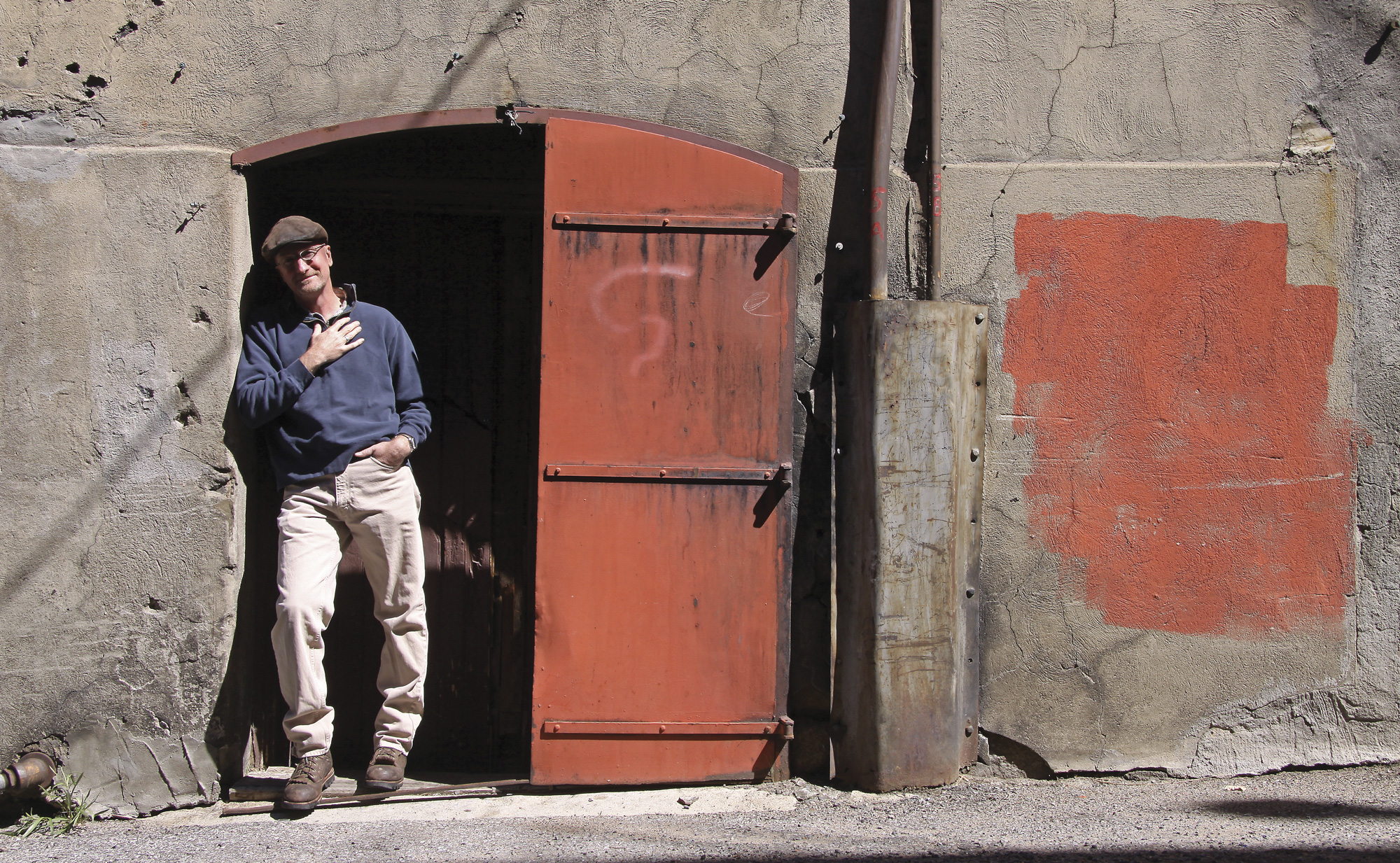
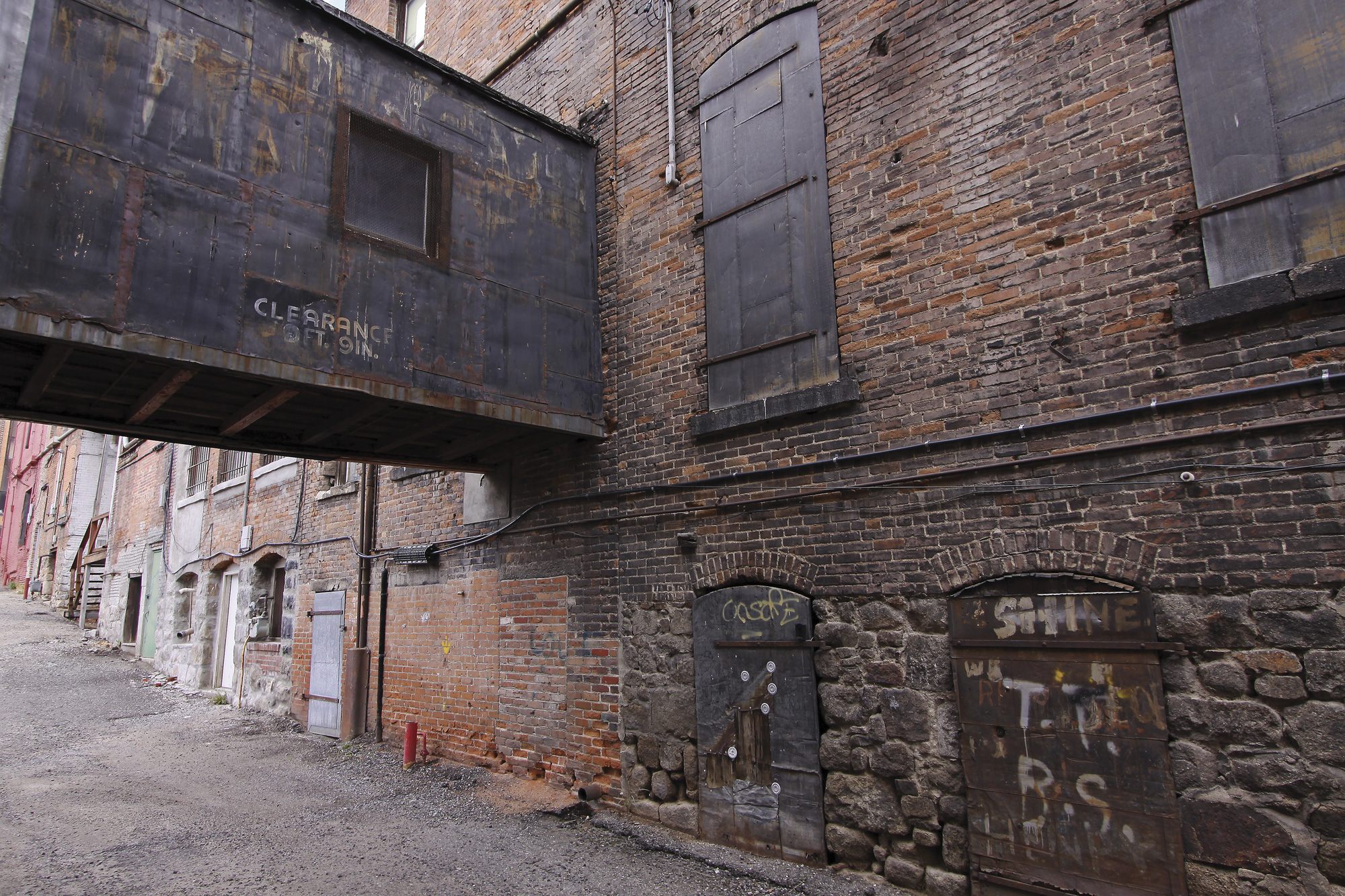

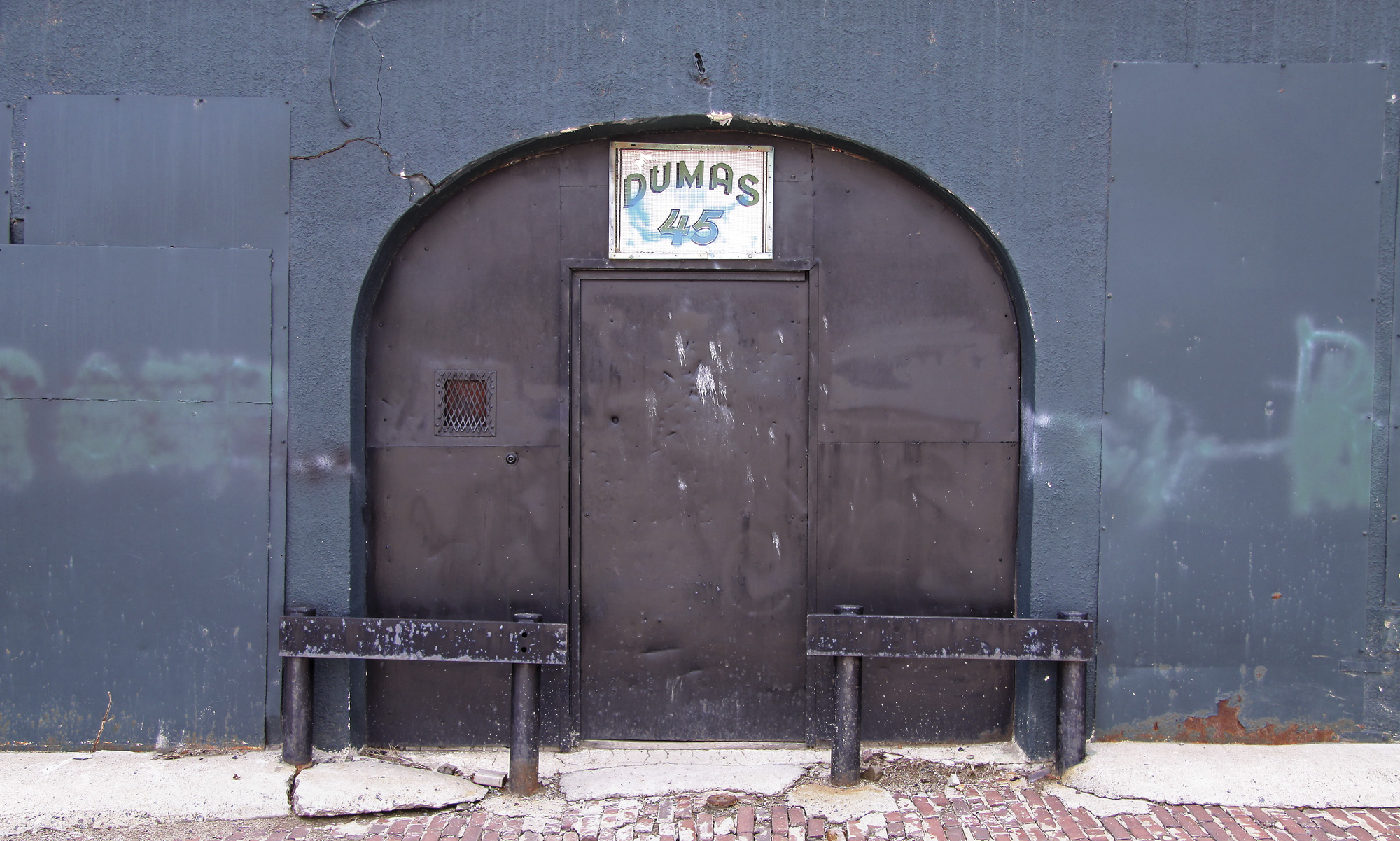
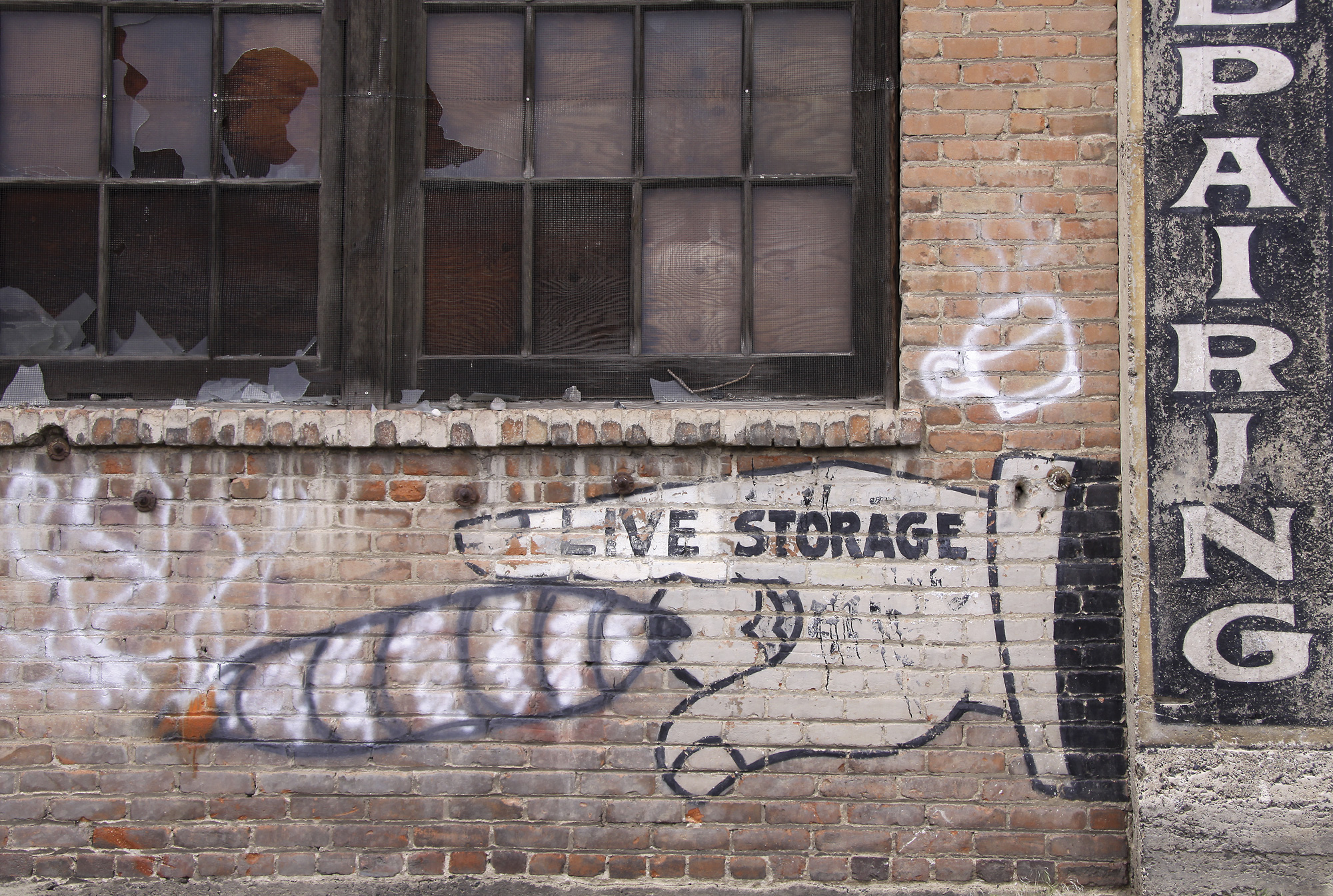
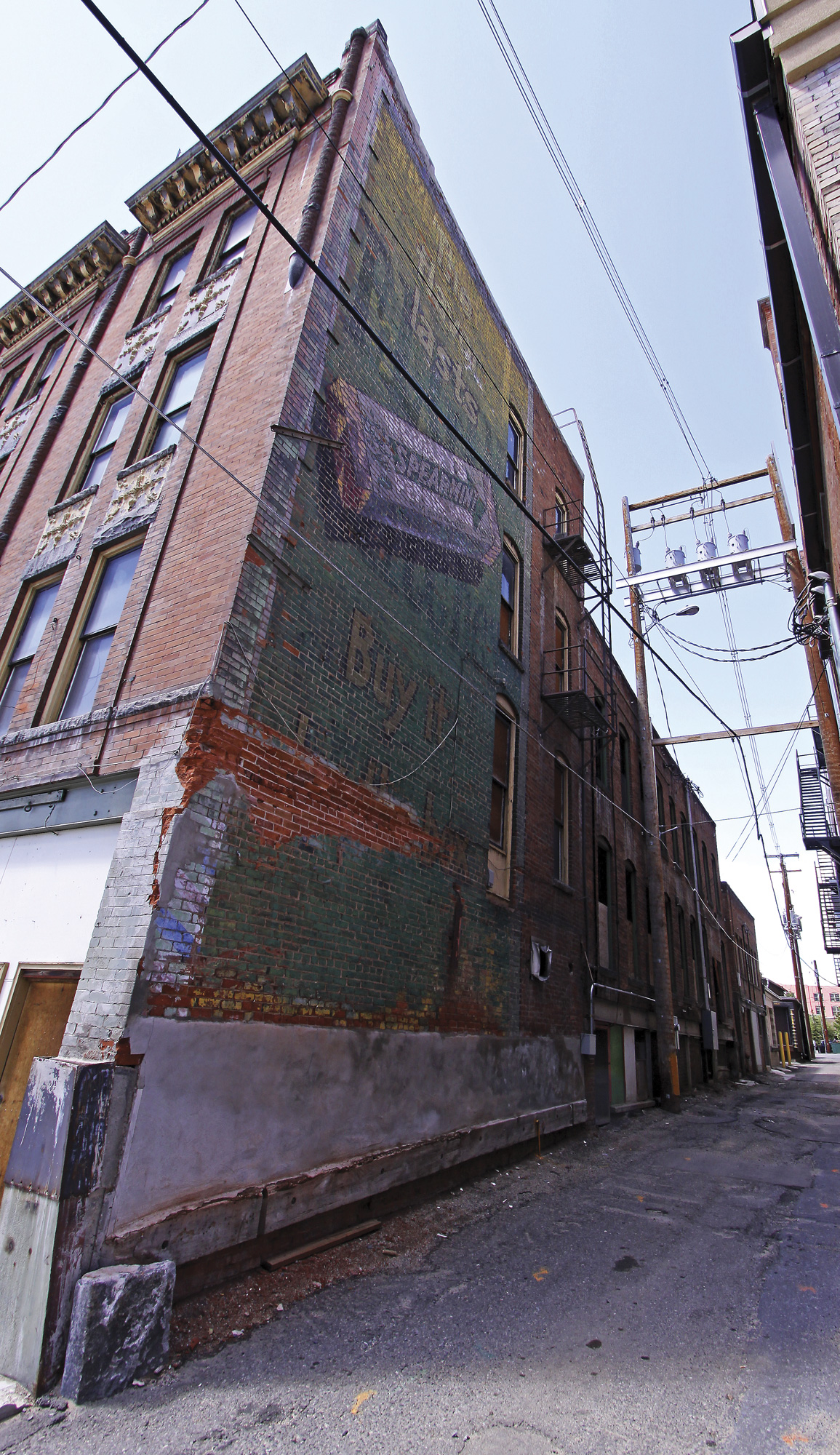
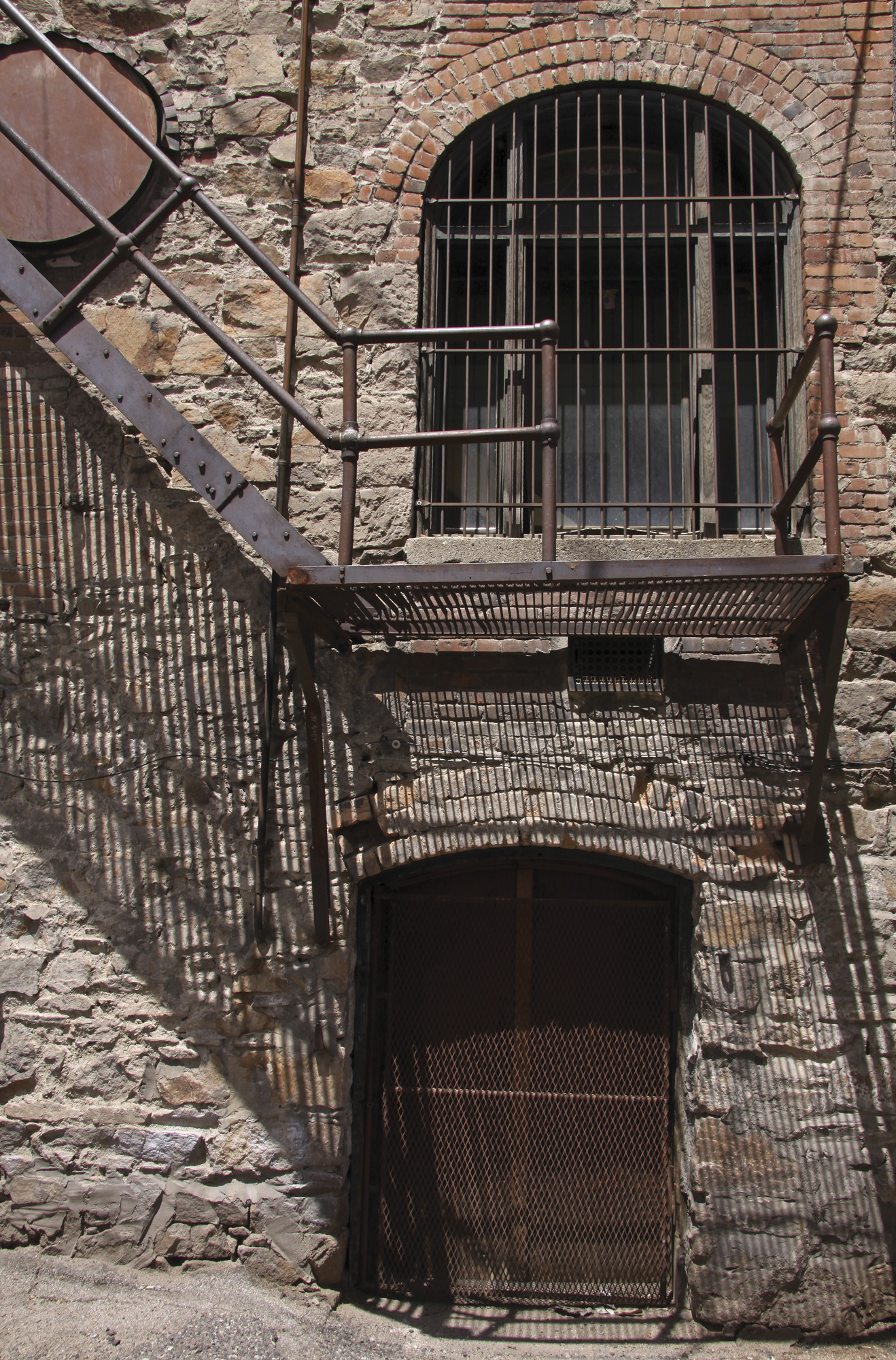
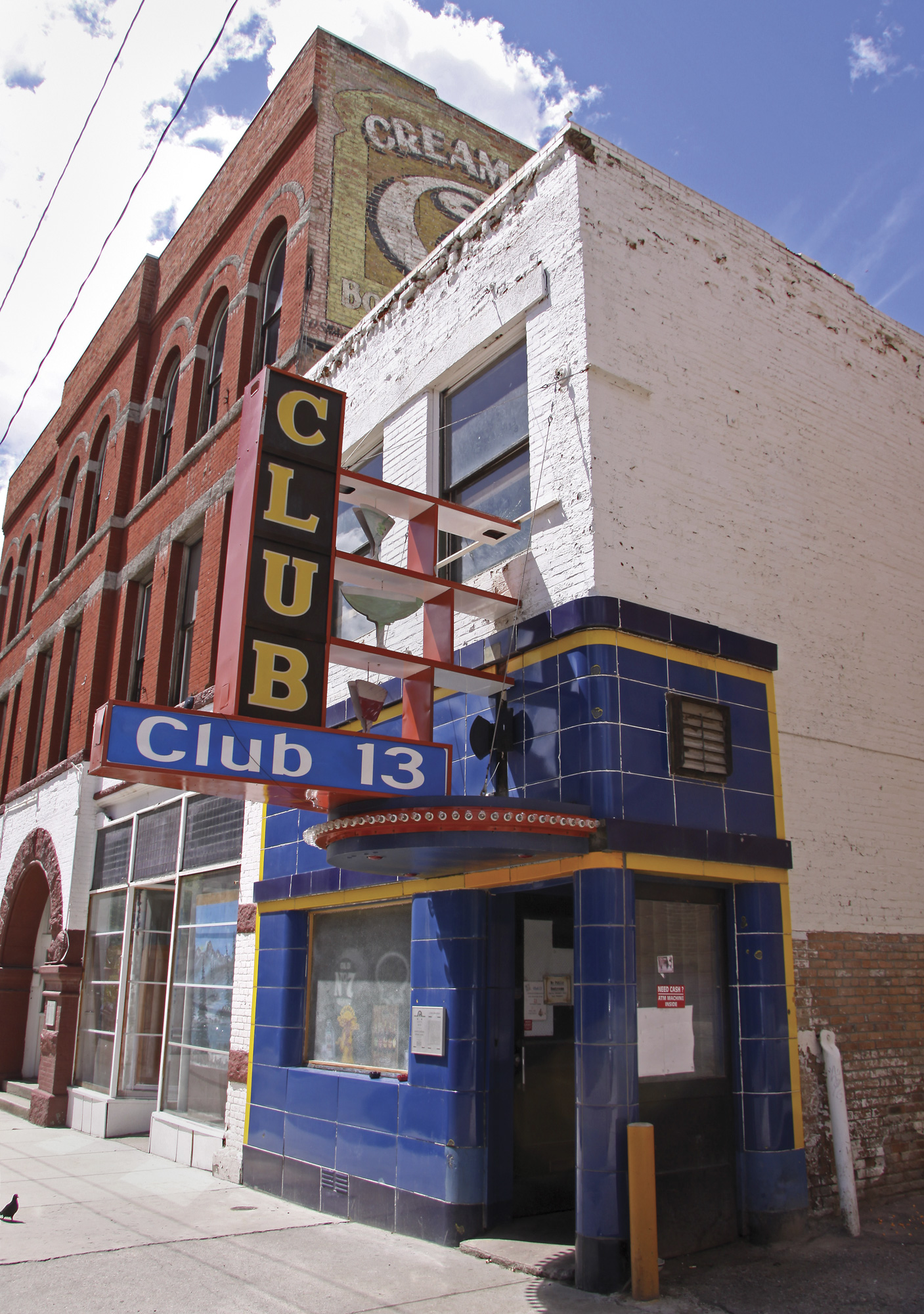
No Comments